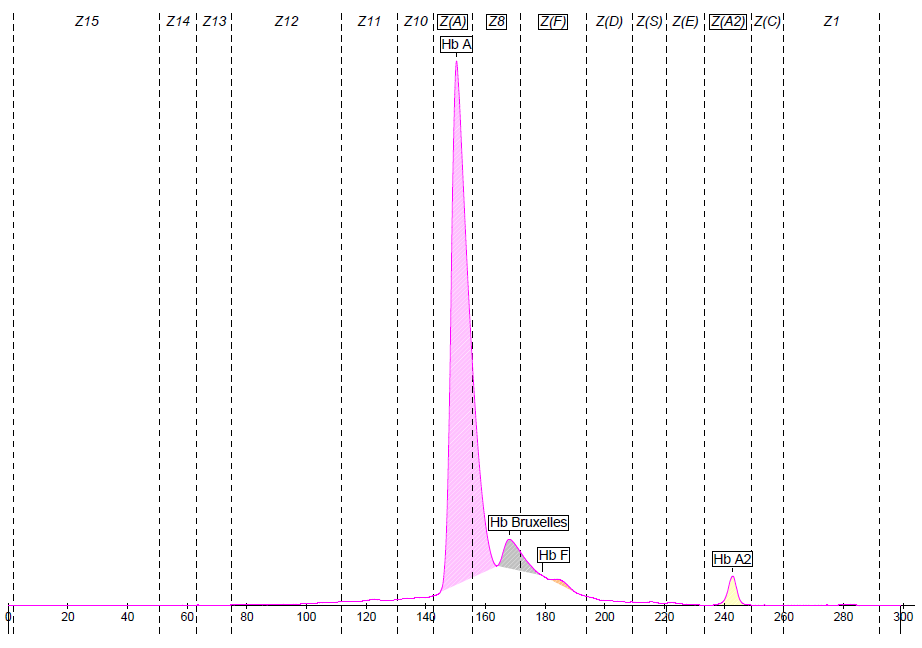General information
Globin chain involved
Status
Heterozygous
Migration zones
Migration positions
168
Sickle Cell Disease: No
Thalassemic variant: No
Capillary Electrophoresis
Fractions
Value %
Hb A
92.6
Hb Bruxelles
4.1
Hb F
0.6
Hb A2
2.7
Comments
Mutation data
Heterozygous Hb Bruxelles
Mutation
HGVS Nomenclature
Beta 41(C7) Phe->0 or Beta 42(CD1) Phe->0
HBB:c.[124_126delTTC or 127_129delTTT]
Hematological parameters
Name
Result
RBC Count
Low
Total Hemoglobin
Low
MCV
No information
MCH
No information
Blood smear
Heinz bodies
Other analysis
No information
Comments on hematology
Severe chronic hemolytic anemia in the heterozygous
Clinical context
Clinical presentation
Anemia symptoms, splenomegaly, cyanosis
Clinical risk
Severe condition in association with Beta-thalassemia
Variant information
Stability
Unstable
Oxygen affinity
Decreased
Ethnicities in literature
Found in a 4-year-old Belgian girl, but not in the parents. Presumably a de novo mutation
Comments on variant information
Scientific Literature
Scientific references
Globin Chain involved
Status
The term "Double Heterozygous" refers to cases of heterozygosity on different globin chain types, while the term "Compound Heterozygous" refers to cases of heterozygosity on the same globin chain type.
For example, S/G-Pest is a Double Heterozygous case (beta and alpha-globin chains are mutated) and S/C is a Compound Heterozygous case (only beta-globin chains are mutated).
Migration zones
Migration positions
Sickle Cell Disease
Thalassemic variant
Capillary Electrophoresis
Variant information
Ethnicities are provided for informational purposes only and are based on scientific literature and conference posters.
A hemoglobin variant may therefore be present in populations of ethnic origins or countries not listed here.

